



by Steven Nyland, OrganicCrops. Posted on 20 June 2017, 07:04 hrs
Chocolate is considered a magical treat by many. With the rise of artisan chocolate producers, organic fine cacao products from the Amazon rainforest in Peru are quickly becoming the bean of choice for good quality chocolate. This article will zoom in on the cultivation and production of Peruvian cacao, the basis for the best chocolate in the world.
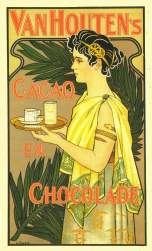 A new journey
A new journeyThere is a lot of information about cacao and chocolate. Since father and son Van Houten came up with several innovative chocolate producing processes in the early 19th century, chocolate quickly became a mainstream product for consumers everywhere. For many years people enjoyed ‘commercial chocolate’ in all shapes, flavors and sizes.
Consumers are becoming more aware of the ingredients and origin of the chocolate product they are consuming. 100% cacao chocolate products are becoming popular. Single origin bean-to-bar is no longer a buzz phrase but common practice for quality chocolate. With the rise of the artisan chocolate makers, cacao and chocolate are starting a new journey, perhaps even a small revolution, with fine quality chocolate – made from the best cacao, Peruvian Criollo.
Cacao and chocolate have been around for thousands of years. Although the debate is still open about the origin of the Theobroma cacao tree, experts generally agree that the shrub originated in the tropical Andes foothills, in the Amazon rainforest. We know that the Aztecs made cacao drinks from fermented beans as far back as 1900 BC. The Aztecs believe that the beans were a gift from the God of Wisdom and cacao beans became a valuable commodity that eventually were used as a form of currency.
Mayans depicted cacao pods on their temples and used the “food of the Gods” during religious ceremonies. Fermented and ground cacao beans were mixed with spices and water. The drink was considered medicinal and was often enjoyed as we would enjoy a good cup of coffee nowadays.
The Theobroma cacao tree is fairly picky where it lays its roots. The cocoa tree grow in a limited geographical zone, of about 20° to the north and south of the Equator. It prefers soil that’s fertile, slightly acidic and well drained. The climate must be warm but not too warm with a consistent temperature of 25-27°C. Also the tree prefers a stable climate with rainfall ideally be regular and between 1250 and 2500 mm per year. Not too dry and not too wet. Being sensitive to strong winds and direct sunlight, Cacao trees thrive under the shade of other, tall-growing plants and trees.
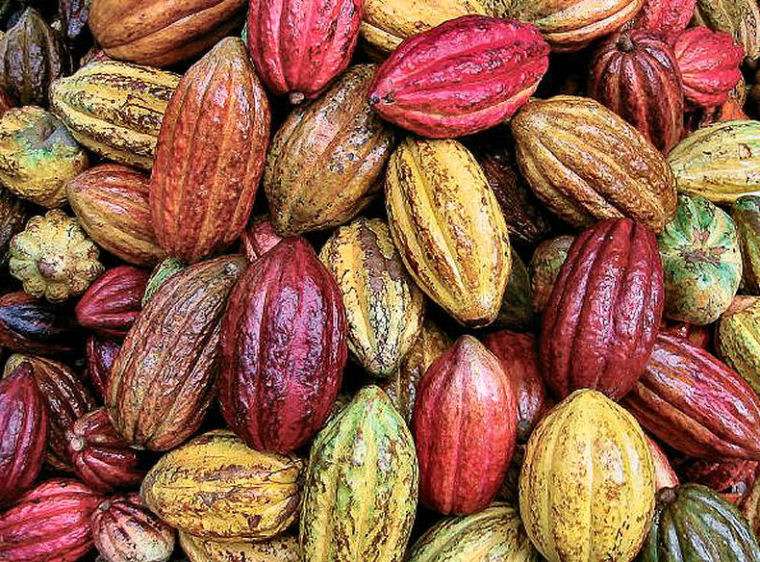
The Amazon rainforest ticks all the boxes for the cacao tree to grow successfully. You can still find wild cacao trees in the Amazon. Though nowadays farmers carefully and skillfully cultivate cacao trees on farms.
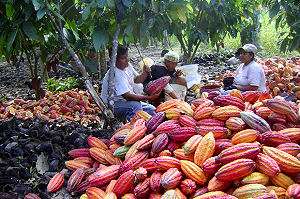 Peru is the world’s ninth largest cacao producer and the world’s largest organic cacao producer. 60 to 70 percent of its cacao is exported, as cacao bean and increasingly as cacao derivatives. More than 50,000 Peruvians earn a living through the cultivation and production of cacao. Peruvian farmers have an average farm size of 2 hectares that make up the 40,000 cacao hectares mainly in the Eastern Andes and Peruvian Amazon rainforest. The yield per hectare varies from 1 to 2.5 metric tons.
Peru is the world’s ninth largest cacao producer and the world’s largest organic cacao producer. 60 to 70 percent of its cacao is exported, as cacao bean and increasingly as cacao derivatives. More than 50,000 Peruvians earn a living through the cultivation and production of cacao. Peruvian farmers have an average farm size of 2 hectares that make up the 40,000 cacao hectares mainly in the Eastern Andes and Peruvian Amazon rainforest. The yield per hectare varies from 1 to 2.5 metric tons.
Chocolatiers and artisan chocolate producers have used Peruvian cacao to create the world’s finest chocolate products. Peru’s cacao products are used for the best chocolate in the world
Peru cultivates mainly Trinitario, Forastero and Criollo cacao varieties. Criollo beans are a soft and pale pink in color and their taste is delicate and complex. Criollo beans are famous for their richness in secondary flavor notes, long flavor duration and a greater and more complex fat content. Because Criollo is lower in classic chocolate flavor, the beans are often mixed with Trinitario and or Forastero to create a delicate fine chocolate.
Should you focus on solely Criollo beans? No. Pure Criollo does not exist anymore. Farming, domestication and cultivation during the last few hundred years has influenced Forastero and Criollo. Trinitario was created as hybrid between the two. If one would look into the DNA of Criollo you would discover that it has traces of various cacao populations. This is not a bad thing. The original Criollo is prone to decease. One could argue that the quality of Criollo has improved over the years. It all up to debate, personal taste and choices made by the chocolate producer. Criollo is still the bean of choice for quality chocolate.
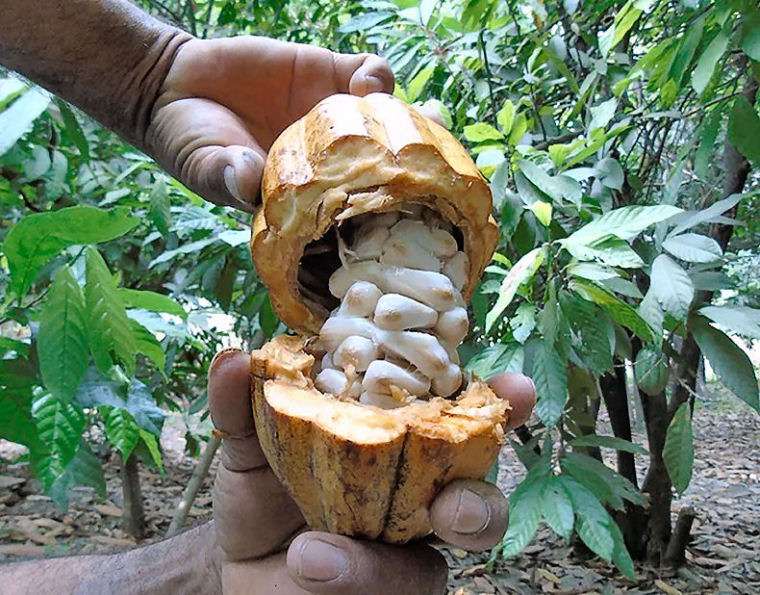
In northern Peru, in the region of Piura, some 4 degrees south of the equator, the rare, highly sought after, and highly priced white Criollo cacao bean is grown. The regions climate is very dry most of the year but from January to March it rains enough to maintain a tropical-arid climate, the perfect condition for White Criollo. The bean is considered a mutation. One that was left alone for hundreds of years and therefor given a chance to develop into something special.
Renowned chefs Anthony Bourdain and Eric Ripert went out to find the magical white cacao bean. Below a fragment from the “Anthony Bourdain: Parts Unknown” episode:
The “Manjar de los Dioses”, or nectar of the Gods, have a mellow-tasting flavor profile due to lower anthocyanins count which results in a less bitter, less acidic chocolate flavor. With a cacao butter percentage of 50-60% they are often used in combination with regular Criollo beans and other beans to create unique flavor profiles. Some chocolatiers offer 100% white Criollo chocolate products at prices that can only be afforded by the happy few.
There has been a lot of debate regarding what one should call the product, the process, value-added products, etc. At OrganicCrops we call the bean after the Malvaceae evergreen tree that produces the pods. The binomial name for the tree is Theobroma cacao. Even though there are numerous synonyms, all of them use cacao, never cocoa.
Cacao beans, cake, paste, powder and butter are all considered cacao products. Once the products are processed into a consumer products the name often changes into cocoa, such as sweetened cocoa powder.
Fair trade means that the producers of the cacao pods (the farmers and farming communities) are paid a fair price for their crops. There are several organizations that certify and guarantee that the farmers get paid a fair price. The largest and most well-known organization is Fairtrade International, often referred to as Fairtrade FLO. The products are often more expensive to cover the extra cost of a fair salary/price.
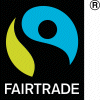 OrganicCrops cacao products mainly come from Huanuco and San Martin. We do not buy the cacao but rather sell it on a commission basis, that way the majority of profits end up in the farming community.
OrganicCrops cacao products mainly come from Huanuco and San Martin. We do not buy the cacao but rather sell it on a commission basis, that way the majority of profits end up in the farming community.
Cacao is a traded commodity product and the prices are determined on the NYSE. We follow these prices as well and mark them up accordingly. The farmers therefor do not receive the same payment for their crops all the time. Although the differences are small.
To fulfill international trade procurement requirements and certification directives, we work with farming communities and farming corporations. This way it is easier to maintain administrative and quality requirements and keeping overhead cost down.
CSR and social programs are nowadays initiated through the farming coorporation. OrganicCrops focusses and promotes traditional cultivation and harvest techniques, organic soil management, organic cultivation, and product and process administration. Together with various Peruvian government organizations initiatives have started to convince farmers to switch to cacao (and coffee) farming (switch from coca farming).
Buying fair trade products really makes a difference for the farming community. OrganicCrops always encourages its clients to pay a little extra for fair trade products. It also supports the marketing of said companies, being able to communicate fair trade practices, giving consumers the feeling of ‘helping out’ the cacao farmers.
Cacao products are exported in various stages of production, weight and size ranging from fermented dried beans, nibs, paste, cake and powder to ready to consume chocolate. Below is the process flow-chart of the production process of cacao powder with a fat contents of 10-12% (Cacao 10/12):
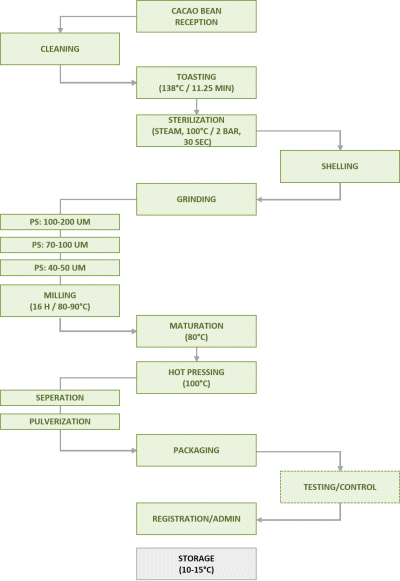
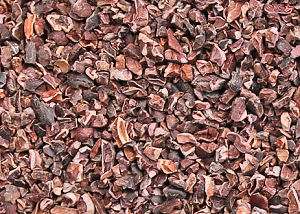
Immediately after harvest, the Cacao beans are carefully removed from the pod to undergo the fermentation process. During the fermentation process, complex chemical reactions naturally occur within the cacao beans, resulting in the Cacao nibs to turn dark brown with a bitter chocolate flavor. After the fermentation process the beans are dried till the moisture content reaches 7 percent. Cacao beans are often packed into large jute bags for export or stored for further processing.
Cacao nibs are broken up pieces of clean, fermented cocoa beans which have been roasted or toasted before shelling. Cacao nibs can be consumed directly or be used for further processing to make cacao paste/liquor, cacao butter, cacao cake/solids and cacao powder.
Traditionally the shell of the cacao bean was sold off to cattle farmers in Peru. Nowadays cacao shells are sold as a by-product to the tea-industry.
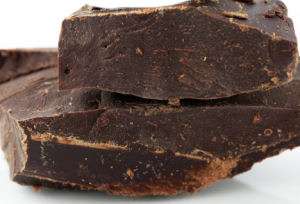 In North America and Europe often referred as 100% unsweetened chocolate, baking chocolate or bitter chocolate. Other names include Cacao Mass and Cacao Liquor. It is the first liquid stage of processing cacao beans. Fermented cacao beans are cleaned, toasted and steam cleaned. This stage is known as “micronising” and its purpose is primarily sterilization and to loosen the shell from the nib of the bean. Once micronized, beans can be broken up and “winnowed”. During winnowing, the shells are removed by air flow leaving only the cacao nibs.
In North America and Europe often referred as 100% unsweetened chocolate, baking chocolate or bitter chocolate. Other names include Cacao Mass and Cacao Liquor. It is the first liquid stage of processing cacao beans. Fermented cacao beans are cleaned, toasted and steam cleaned. This stage is known as “micronising” and its purpose is primarily sterilization and to loosen the shell from the nib of the bean. Once micronized, beans can be broken up and “winnowed”. During winnowing, the shells are removed by air flow leaving only the cacao nibs.
The cacao nibs are roasted which both sterilizes the nibs and enhances the flavor. For raw cacao products, the nibs are toasted at a maximum temperature of 42 degrees Celsius. Once roasted/toasted, the nibs are cooled and are ready for grinding. The action of physical grinding is all that is required to turn the solid nibs into a pasty liquid, by releasing cacao butter (fat) from the nibs with the remaining cacao solids held in suspension. The cacao paste passes through several stages of grinding to achieve the required particle size. Cacao liquor or pasta is often used as the base for the chocolate manufacturing industry.
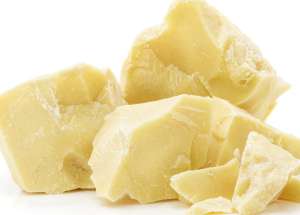 Cacao butter is the pale yellow fat that is extracted from the cacao bean. The butter has a distinctive mellow cacao odor and aroma. It is an important ingredient for making chocolate but is also used by the pharmaceutical industry for the production of toiletries, skin and hair care products, and pharmaceutical ingredients.
Cacao butter is the pale yellow fat that is extracted from the cacao bean. The butter has a distinctive mellow cacao odor and aroma. It is an important ingredient for making chocolate but is also used by the pharmaceutical industry for the production of toiletries, skin and hair care products, and pharmaceutical ingredients.
OrganicCrops offers cacao butter for human consumption purpose (e.g. chocolate products) and cacao butter for the pharmaceutical industry. Both products can be consumed safely but cacao butter for the pharmaceutical industry has a much higher melting point (40 °C), making it ideal to process into valued added products. Whereas regular cacao butter has a melting point of around 34 °C which makes chocolate melt in your mouth at body temperature.
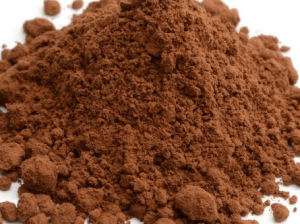 Cacao powder is pulverized cacao solids/cake. Cacao powder can be consumed directly to create chocolate milk, baked goods or homemade chocolate or can be used to process further into a great variety of products. Cacao powder has a fat contents of 10 to 12 percent and is therefore often referred as cacao powder 10/12. A higher fat contents (20-22%) is also offered.
Cacao powder is pulverized cacao solids/cake. Cacao powder can be consumed directly to create chocolate milk, baked goods or homemade chocolate or can be used to process further into a great variety of products. Cacao powder has a fat contents of 10 to 12 percent and is therefore often referred as cacao powder 10/12. A higher fat contents (20-22%) is also offered.
The commercial chocolate industry often processes the cacao cake/powder by treating the powder with alkaline salts. This process is called Dutching (after Dutchman Coenraad Van Houten). Dutching or Dutch chocolate has a more subtile flavor (less bitter). Besides the bitterness, the Dutching process also removes the majority of health benefits such as antioxidants.
Raw chocolate products, made from raw cacao, are supposed to be chocolate products made from cacao beans that have not been processed using a heat source of more than 42 °C. This partly incorrect. An important part of the chocolate flavor is developed during the fermentation process of the cacao bean. This natural process occurs after harvest and lasts 2-8 days, depending on the bean (Criollo beans need a shorter amount of fermentation) and the desired flavor profile. The fermentation processes generates heat, and the temperature is raised to 40-45 °C during the first 24-36 hours of fermentation, with peaks of up to 55 °C.
Proper fermentation requires skill and knowledge in order to develop the fine chocolate flavors that makes Peruvian cacao famous.
One can control the generation of heat during the fermentation process by reducing the amount of beans in the sweat boxes. The layer of beans need to be thin enough for the generated heat to disperse quickly. Obviously this process takes a lot longer, is much more labor intensive and therefor results in an increase of the raw material price Very few producers ferment this way.
So is raw cacao and raw chocolate all just marketing? No. There is a big difference. Cacao beans for raw nibs are toasted for up to 2 minutes at a maximum temperature of 42 °C whereas cacao beans for roasted nibs are roasted at a temperature of 120 °C to enrich the flavor profile. The higher temperature roasting does mean there is a loss of enzymes, anti-oxidants and nutrients which is why companies that market raw chocolate sell their products as a ‘healthier’ option. Products made from raw cacao are often 100% natural and most of the times 100% organic.
But, there is a very good reason why almost all beans are roasted. Roasting at 100+ degrees Celsius enables caramelization and a process called the Maillard reaction that adds flavor to the beans. For traditional chocolate flavors, this roasting process is the only way to generate that specific flavor profile. Cold roasting (at maximum 42 °C) doesn’t allow for the crucial flavor changes to occur.
Raw nibs are slightly more expensive due to the weight difference compared to roasted nibs. The process to create products such butter, powder and paste involves heat and or pressure.
A recent study carried out by Penn State University and published in Science Daily states that "Manipulating the temperature and the length of time under which cocoa beans are roasted can simultaneously preserve and even boost the potency of some bioactive and antioxidant compounds".
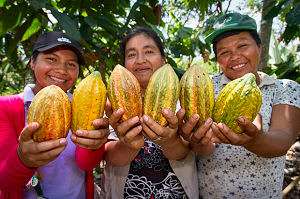 The Incas and Mayans knew many years ago that cacao offers important health benefits and considered cacao as a medicinal product. Cacao nibs and unprocessed cacao powder (non-Dutched) offer a rich source of antioxidants such as procyanidins and flavonoids. Raw cacao products are said to contain 40 times the antioxidants of blueberries. Cacao is the highest plant based source of iron, some 7 mg per 100 g, and one of the highest plant-based sources of Magnesium and Calcium (up to 175 mg per 100g).
The Incas and Mayans knew many years ago that cacao offers important health benefits and considered cacao as a medicinal product. Cacao nibs and unprocessed cacao powder (non-Dutched) offer a rich source of antioxidants such as procyanidins and flavonoids. Raw cacao products are said to contain 40 times the antioxidants of blueberries. Cacao is the highest plant based source of iron, some 7 mg per 100 g, and one of the highest plant-based sources of Magnesium and Calcium (up to 175 mg per 100g).
Every year a great number of scientific studies are published to inform consumers about the benefits of cacao and chocolate products. A number of studies are funded by the large commercial chocolate manufacturers such as Mars, Barry Callebaut, Hershey’s and Nestlé. Their goal is to make you consume more of their product. There is nothing wrong with that. It happens in most industries. If you want to know more about health benefits of cacao and chocolate products then a little bit of research on the Internet will go a long way.
There is no doubt that cacao is good for you and that good quality chocolate (not the sugary commercial products) actually benefit your health. Use your common sense. If it sounds too good to be true, it usually is.
Let's finish this article with the excellent BBC documentary of Michel Roux Jr who is on a journey in search of a signature, personalized chocolate to use in his restaurants. Enjoy the episode of "BBC Chocolate Perfection with Michel Roux Jr".